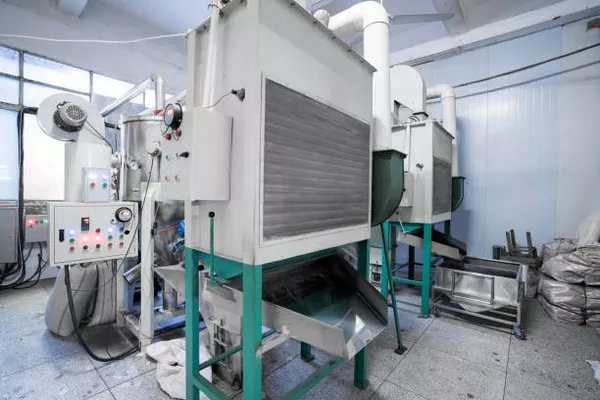Generators are essential tools for providing portable power in various situations, whether for camping, emergency backup, or powering tools on job sites. Understanding what a 1300-watt generator can run is crucial for effective planning and ensuring you have the power you need when you need it. In this guide, we will explore the capabilities of a 1300-watt generator, the types of appliances it can power, and important considerations for using it effectively.
Introduction to 1300 Watt Generators
A 1300-watt generator is considered a compact, lightweight option for portable power. Ideal for small-scale applications, it offers a balance between power output and portability, making it suitable for a variety of scenarios. These generators are commonly used for camping trips, outdoor events, or as emergency backup power for essential household appliances.
Understanding Power Ratings
Continuous vs. Surge Power
Before determining what a 1300-watt generator can run, it is essential to understand the difference between continuous power and surge power:
Continuous Power: This is the maximum wattage that a generator can supply continuously without overheating or damaging itself. For a 1300-watt generator, this is typically around 1300 watts.
Surge Power: This is the additional power that a generator can provide for a short period (usually a few seconds) to start appliances that require more power at startup. This value can often be higher than the continuous rating and is crucial when determining what appliances can be run simultaneously.
What Can a 1300 Watt Generator Power?
Home Appliances
A 1300-watt generator can handle several small to medium-sized home appliances. Here are some examples:
Refrigerators: Most standard refrigerators require between 600 to 800 watts to run, but they may need up to 1,200 watts to start. A 1300-watt generator can usually power a refrigerator but may not be able to handle additional loads simultaneously.
Microwaves: A typical microwave can use between 600 to 1,200 watts. You could use a microwave on a 1300-watt generator, but care should be taken to avoid exceeding the generator’s capacity.
Fans and Heaters: Ceiling fans usually consume around 75 watts, while portable heaters can range from 800 to 1,500 watts. A small heater or fan can typically be run without issues.
See Also: How Long Will a 12,000-Watt Generator Run? A Full Guide
Power Tools
A 1300-watt generator is capable of powering various power tools commonly used in construction or home improvement projects. Some examples include:
Drills: Most corded drills require between 500 to 800 watts, making them manageable for a 1300-watt generator.
Saws: Circular saws typically draw between 1,200 to 1,500 watts, which means they may push the limits of a 1300-watt generator. It’s best to check the specific model’s wattage requirement.
Sanders and Grinders: These tools generally consume around 500 to 1,000 watts, making them suitable for operation with a 1300-watt generator.
Other Applications
Apart from household appliances and power tools, a 1300-watt generator can also be used for:
Camping Gear: It can power small camping appliances like electric stoves, lights, and charging devices for mobile phones or tablets.
Medical Equipment: It can be a vital source of power for essential medical equipment like CPAP machines, which typically require around 300 to 600 watts.
Estimating Power Requirements
Calculating Wattage Needs
To determine if a 1300-watt generator can run your desired appliances, you must calculate the total wattage needed. You can do this by adding the wattage of each appliance you plan to run simultaneously.
Example Calculation:
Refrigerator: 800 watts
Microwave: 1,000 watts (at startup)
Total wattage: 800 + 1,000 = 1,800 watts
In this case, you would exceed the capacity of a 1300-watt generator.
Starting vs. Running Wattage
It’s important to consider the starting (surge) wattage versus the running wattage. For example, while a refrigerator may run on 600 watts, it might need 1,200 watts to start. Therefore, even if the running wattage is within limits, the starting wattage can exceed the generator’s capacity, potentially causing overload.
Real-World Examples of Usage
Camping and Recreational Use
A 1300-watt generator is a popular choice for camping and outdoor events. It can run lights, charge devices, and power small appliances. For example, you could run:
LED lights (10 watts each, allowing for multiple lights)
Camping stove (800 watts)
Small refrigerator (600 watts)
In this scenario, a 1300-watt generator can easily handle the load, providing comfort during your outdoor adventures.
Home Backup Power
In an emergency, a 1300-watt generator can keep essential appliances running. Typical usage includes:
Refrigerator: 800 watts
Fan: 75 watts
Charging devices: 50 watts
Total power needed would be approximately 925 watts, leaving some capacity for additional small items.
Job Site Power
For light construction work, a 1300-watt generator can power essential tools such as:
Corded drill: 600 watts
Small work lights: 100 watts each
This setup allows for multiple tools and lights, making it effective for small job sites.
Tips for Maximizing Efficiency
Maintenance Practices
Regular maintenance can prolong the lifespan and efficiency of your generator. Here are some tips:
Check Oil Levels: Ensure the oil is clean and at the appropriate level.
Inspect Fuel Lines: Regularly inspect for any leaks or damage.
Clean Air Filters: Keep air filters clean to promote optimal airflow.
Usage Tips
Load Management: Always calculate your total wattage needs before starting your generator. Avoid running at maximum capacity for extended periods.
Prioritize Essential Appliances: In case of a power outage, prioritize running essential appliances first.
Conclusion
A 1300-watt generator can be a versatile power source for various applications, from household appliances to power tools and camping gear. By understanding the wattage requirements of the items you intend to power, you can effectively plan your energy needs and maximize the benefits of your generator. Proper maintenance and load management will ensure that your generator runs efficiently and serves you well for years to come.
You Might Be Interested In

